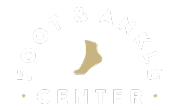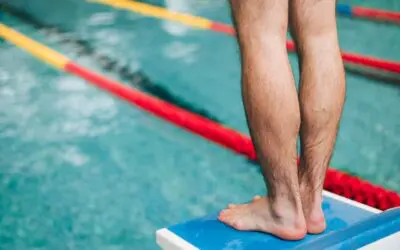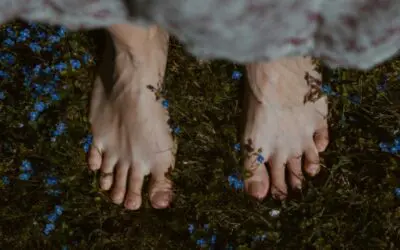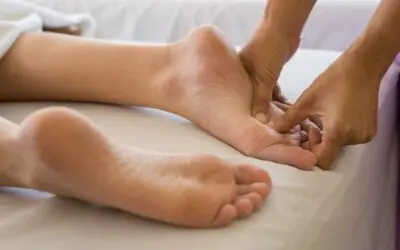Sports massages: Are they a miracle for tight calves or a necessary evil? If you’ve ever wondered what this therapeutic treatment is all about, you’re not alone.
While sports massage is celebrated for its ability to target muscle tension and prevent injuries, it’s also often met with skepticism, especially because of the potential for pain and soreness during or after the session.
So, what’s the truth behind the treatment? We’ll clear up common misconceptions, explain how sports massage can help with foot and ankle discomfort, and give you the inside scoop on whether you’ll be walking away feeling sore or soothed.
What Is Sports Massage?
Sports massage is a therapeutic technique primarily designed for athletes and active individuals. While traditional massage focuses on stress relief and relaxation, sports massage targets muscle tension, improves flexibility, and promotes faster recovery.
Sports massage therapists use a variety of techniques, including deep tissue massage, stretching, and trigger point therapy. These techniques help increase the range of motion in joints and improve blood flow.
Your feet and ankles are under constant stress from walking, running, standing, and sporting activities. A targeted sports massage can increase circulation, relieve discomfort in the Achilles tendon or ankle joints, and offer much-needed arch pain treatment.
Should I Brace for Pain?
A good sports massage includes significant pressure on tense muscles, which may feel intense but shouldn’t be painful. People who have had a sports massage before commonly describe the sensations as mild pressure, stretching, and a sort of “good” discomfort.
If you do feel pain, it’s important to say so immediately to keep from being injured. Always communicate with the therapist to keep pressure within your personal comfort limits. A skilled therapist will adjust techniques to individual pain thresholds and comfort.
Foot and ankle issues, such as tight calves or Achilles tendinitis, may cause discomfort during your massage, but it’s a sign that tension is being addressed. Those knots in your calves may feel like they’ve been there on a permanent vacation, but the therapist is here to send them packing.
What to Expect After the Massage
If you feel a bit like you’ve run a marathon after your massage—but without the souvenir medal—don’t worry, it’s temporary. Soreness after sports massage is common, and it’s a sign that your muscles have been worked deeply.
It might feel similar to the aches you feel after an intense workout. And just like after you’ve hit the gym, that soreness usually subsides within one or two days. Soreness isn’t typically something to worry about—it’s just part of the body’s recovery process.
After the massage, be sure to hydrate and rest to relieve your body’s soreness. Lightly stretch the feet, focusing on calves, arches, and toes, and elevate the ankles if any swelling occurs.
If you experience sharp pain or prolonged soreness anywhere in your body after your sports massage, consider contacting your doctor, as these are potential signs of larger issues.
Why It’s Worth a Little Discomfort
Sports massage is one of the most valiant heroes in fighting for injury prevention. It loosens tight muscles, which can improve your movement ability, lowering your risk of injuries like sprains and tears.
Plus, your massage therapist can help you identify areas of tension that, if left untreated, could lead to future injuries. And when you are injured, the better blood flow spurred on by sports massage aids in faster recovery and muscle repair.
Although it’s different than a traditional massage, sports massage can also relieve stress by releasing endorphins that contribute to mental well-being.
How to Have a Great Sports Massage Experience
Imagine you’ve just walked into the hair salon and are whisked back to the chair where a stylist waits with scissors ready to snip. Do you sit down and let them get started without saying a word? No—you walk the stylist through your preferences and needs before they start.
Treat your massage therapist the same way. Nobody is the same, just like no head of hair is the same, so it’s important to fill the therapist in on what your body needs to give them a better sense of how to help you. Don’t hesitate to discuss your goals for the session, any injuries, and your personal pain thresholds before the session begins.
Be sure to be judicious while selecting your therapist—choose a certified professional who understands how to balance massage effectiveness with comfort. If you’re specifically searching for relief in your feet and ankles, look for a therapist with experience, such as an Achilles tendon specialist. They will likely be familiar with treating those areas and the common conditions that affect them.
Remember to drink plenty of water, stretch, and rest post-massage to mitigate soreness most effectively.
Sore, Soothed, and Ready for More
Sports massage isn’t just for the pros. Anyone with an active lifestyle can benefit from it—gym-goers, weekend warriors, and people who work long hours on their feet.
Sports massage may involve some discomfort, but it should be manageable and beneficial. If you’re wondering if it could help relieve some of your pain, don’t shy away without trying it yourself. For a recommendation on stellar massage therapists in the area who will target deep muscle pain, reach out to a foot doctor in St. George.
For many people, the benefits of recovery and performance outweigh the temporary soreness. The results can leave you moving better and feeling refreshed. A little soreness can go a long way in helping your muscles feel like they’re back in action.



